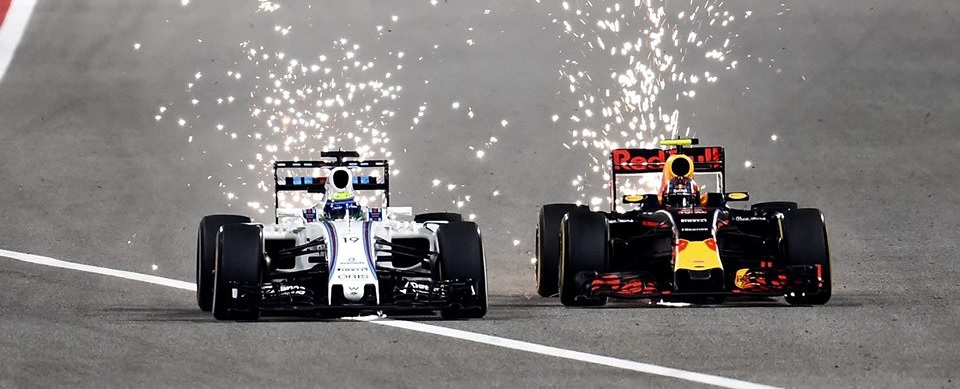Formula One’s fall from grace
As a sport, historically, F1 has always been one of decadence, and like its most famous track, the Circuit de Monaco, a thing of extravagance. Something that’s always held an almost elitist of fascinations. It is a proud sport, a rich sport but, it is also in a patch of rapid, meteoric decline.

It is more than just surprising that, in a day and age where technological advancements are the cornerstone of what drives a population, a sport which functions on the cutting edge of technology, where winning and losing is so close that it’s measured in 100th and 1000th of a second, is seeing such a rapid decline.
However, scratch just below the surface, and in front of you are a multitude of reasons why Formula 1 is failing to find new audiences and is steadily losing its existing audience. While the technology used in building the actual racing animal, be it the car, the mechanical teams, and the driver are moving rapidly forward, the rest of the sport is simply standing still.
The root of all the problems that F1 is facing can be traced back to the fact that it is governed by an overwhelmingly prehistoric group of bureaucrats. Their inability to adapt and change is what the sport is suffering from. There has been very little progress made as far as making the sport more available to a younger, tech-savvy audience.
Gone are the days when watching a sport was an afternoon or an evening event where people sat in their living rooms glued to the television for its entirety (unless your country is playing the final of a football or cricket world cup or it’s an India-Pakistan cricket match), and this is a reality that the FIA has failed to realise and capitalise on.
Next up, the sport constantly tries to redefine itself, and more often than not in recent years, this has been disastrous. Evolution is a necessity, but it has got to be cohesive and it has got to be organic. The problem with F1 is that they try too many different formulas. In a bid to be more ‘environmentally conscious’, in 2014, the 2.4 litre V8 engine, which frankly is one of the sweetest sounds on the planet, was swapped for the more efficient 1.6 litre V6 engine. This move is still a point of contention for most fans.
There used to be a time when it was pure – for the drivers, their thoroughbred racing animals and the sport was their life. They spent their time on the track, they fought to make the sport safer, but faster, and more exciting. It was the fruits of a revolution started by Ayrton Senna, who lost his life in a racing accident, that lets Fernando Alonso walk away from the crash he had at Bahrain. The passion they had for the sport and just the sport shone through, while there are drivers like that still on the racing track, none really seems to be from the younger crop of drivers.

Similarly, tyre rules were changed which made the sport more of a mechanical process than a flat-out race. While car performance has always played a big part in the outcome of races and championships, there has always been a very human element to pure flat-out racing that the Formula 1 is slowly losing. After the limit on the number of tyres and the type of tyres that had to be used in a race and during a race weekend, the next nail in the coffin was the fuel.
There used to be a time in F1 where strategies won races, there were these complex set-ups of exactly how much fuel the car needed depending on driving style and how many refuelling stops there had to be. It was frantic, and it ended some drivers’ races - Felipe Massa was leading the 2008 Singapore Grand Prix when he came in for a pitstop. Ferrari were trying out a new, novel idea. They replaced the lollipop man (the guy with the stop sign that stands in from of a car barrelling down at him at 80mph) with an automated, glorified traffic light. The light changed to green, the car had been fuelled and he drove off with the fuel nozzle still attached to his car, it ruined his race, he rejoined in 17th place and lost the lead to Lewis Hamilton. Was it an awesome moment, safety wise, probably not? But its things like this that made the sport interesting.
Or Suzuka 2005, or rather the Kimi Räikkönen masterclass. He qualified 17th in a qualifying session marred by rain, after being handed a 10-place grid penalty for an engine failure, that saw Ralf Schumacher on pole, with the regular front runners further down the grid. The very first lap of the race saw the safety car deployed thanks to Jacques Villeneuve shunting Juan Pablo Montoya. Giancarlo Fisichella had built up an impressive 20-second lead in the midst of all the drama unfolding, thanks to all the overtaking going on up and down the race. While Räikkönen fought through the race, overtaking almost the whole field, he had the luxury of running a heavier car than most, but needing one less pitstop than the drivers around him. This ability to make a strategy work around him as a driver and his car, gave him the win. Yes, he overtook the seemingly comfortable Fisichella on the last lap of the race, sealing one of the most remarkable comebacks in Formula 1 history.
F1 Suzuka 2005 - Raikkonen vs Fisichella from Johnny on Vimeo.
The addition of the refuelling element made pitstops more perfectly calibrated or it was an utter disaster, but all in all, it added to the entertainment value of the sport. Was the governing body happy with that? Oh no, they went ahead and in a bid to increase the reliability of the car, made it mandatory to build cars that could carry enough fuel to complete the race.
This season and the first race of it in Australia has seen even more dissent with the drivers going as far as to write an open letter to the heads of the sport asking for the new baffling, qualifying rules to be discarded for the next race in Malaysia. This is not the first time that the drivers and the car constructors have gone up in arms about an obsolete system that the people in power are trying to put in place, and by the looks of the direction in which Formula 1 is moving, this isn’t going to be the last.
There are a few urgent things that need attention if this sport is to survive. To begin with, the Fédération Internationale de l'Automobile and mainly Bernie Ecclestone and Jean Todt, have to stop cutting corners and complicating a sport whose calling card is flat out, competitive racing and whose fan base are pure petrol heads who appreciate exactly that. There is the sense of muddling as far as F1 is concerned today, and that needs to be set right sooner rather than later. The need for cutting-edge development outside of the car and more reliable, realistic organisers of the sport is upon us right now. Doomsday-esque as this might sound, beautiful Formula 1 has very little time left before it becomes an archaic shadow of its former self, if it isn’t at that point already.

Comments
Sign up or log in to your account to leave comments and reactions
0 Comments